gravity
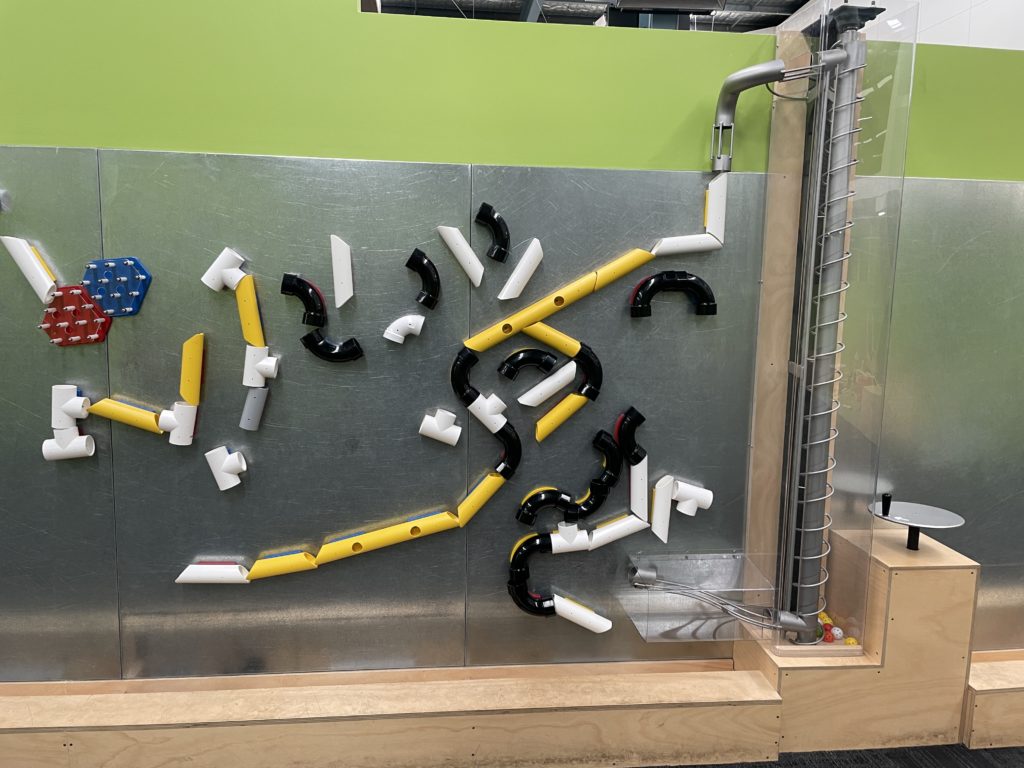
challenges
- Use all the different pieces in a run to see what they do and how they work.
- Construct a run that goes for as long as possible. Time your run and record your time. How long did your run go for?
- Make a run that goes for exactly 10 seconds!
If you lift the ball and drop it, it will fall to the ground. Gravity is the the force pulling the ball to the Earth.
If you put the ball on a ramp, gravity is still pulling it straight down, but the ramp is in the way. The ramp forces the ball to go sideways as gravity keeps pulling downward.
This is why a rolled ball slows down as it rolls and will not keep rolling forever.
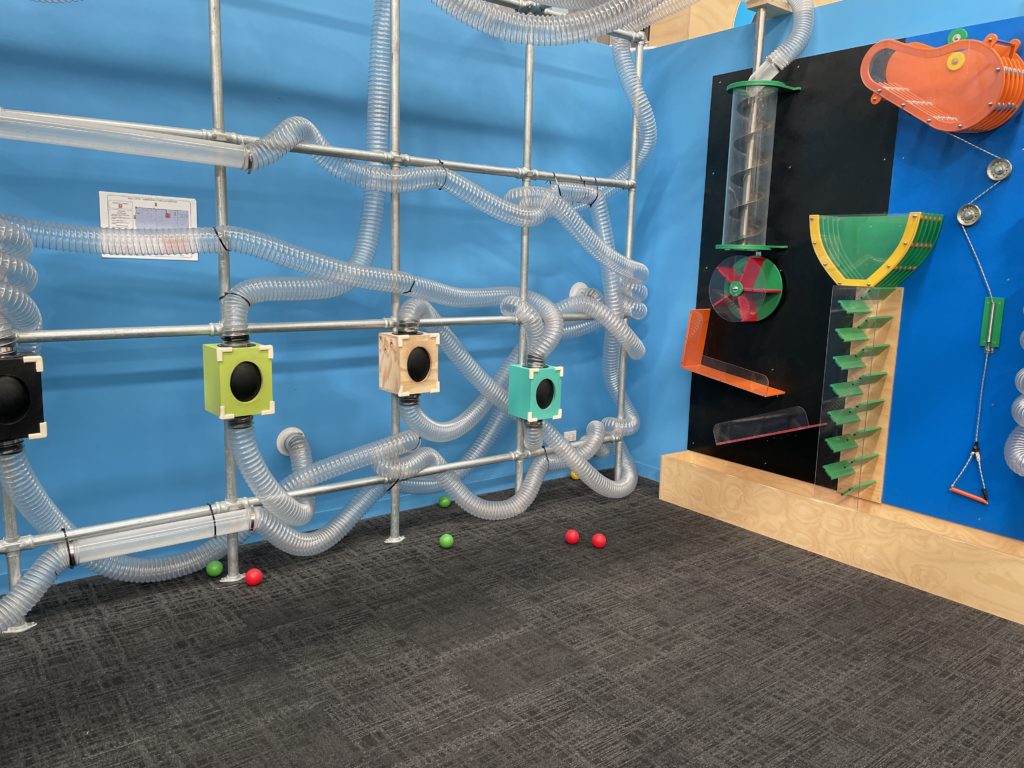
challenges
- Place 5 coloured balls into an opening while holding it open. Make sure one ball is different coloured to the rest. Your challenge is to catch the odd one out. Can you do it with the distraction of all the other balls? Good luck!
- Have 3 people stand at different boxes and put a ball in at the same time. Which is the fastest route?
- Put in as many balls as you like. Stand back with the bucket, and catch as many as you can.
Many living things have airways inside them. In mammals the airway attaches to the lungs which allows us to breathe. Humans need oxygen to breathe, which luckily is in the air all around us. This oxygen is made by plants, which convert the chemicals that we exhale (like carbon dioxide) into breathable air for us. This is why it’s so important for us to look after the plants around us and ensure they are here for our next generation.
Not all animals need air to breathe. For example fish have specialised lungs that allow them to breathe underwater called gills. Have you ever thought about your airway and how you breathe?
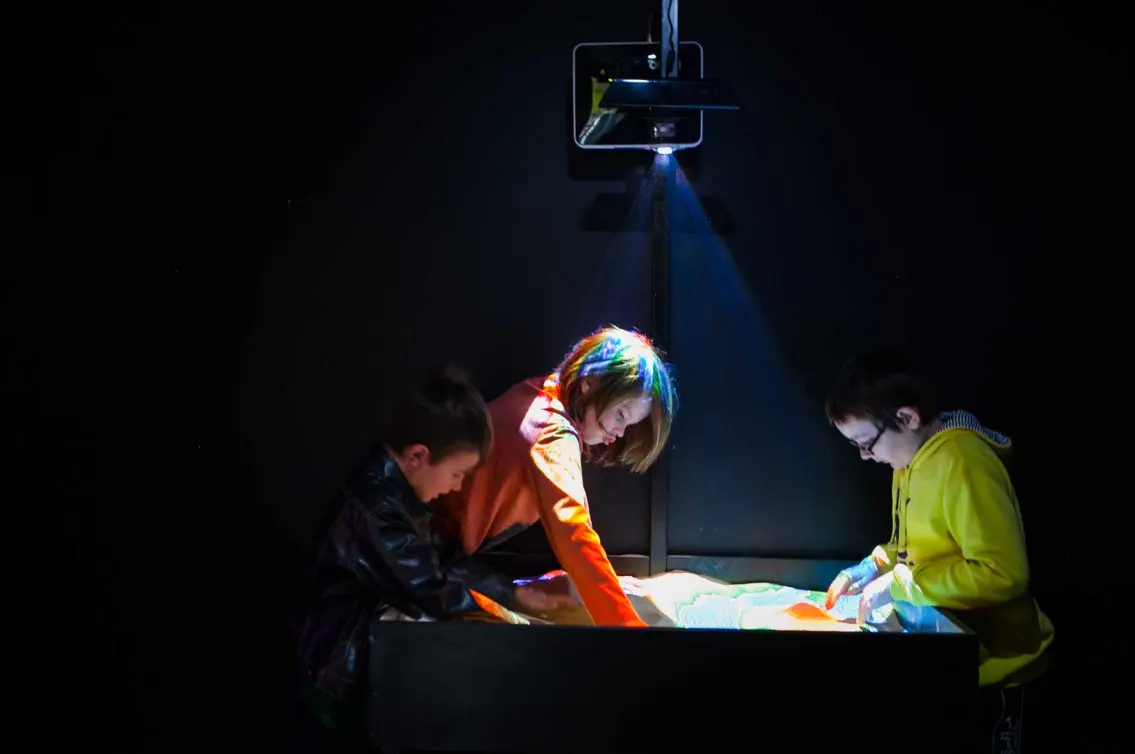
challenges
- See if you can make a lake or a mountain range!
- Can you make a map of Australia?
- Apart from the contour map, what other games can you find?
Sculpt is an exhibit that shows you how contours on a map work. Contour maps are used to show the height of a map. Each line is at the same height. If the lines are close to each other it means that the slope is steep and if they are far apart the slope is more flat. Contours updates the contour lines as you move the sand around.
Sculpt uses a technology called augmented reality. Augmented reality projects virtual images on to the real world and may be used one day to provide a heads-up display in real life just like in first-person games!
sound beam
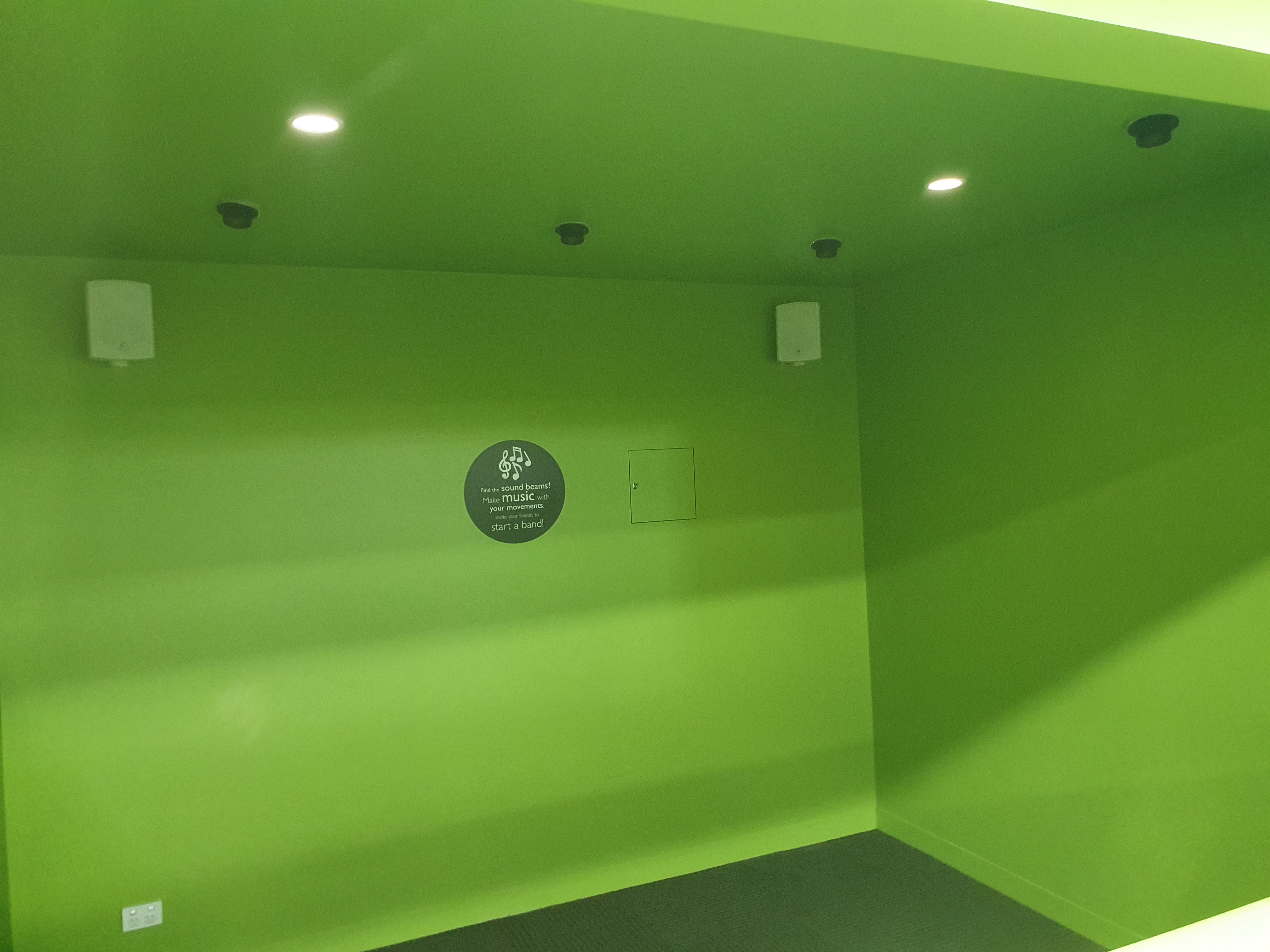
challenges
- Make a song with your friends using classical instruments!
- Can you all get the same note at once?
- See if you can play your favourite song!
In the Sound Beam exhibit, there are infrared (invisble) beams of light travelling from the ceiling to the floor. When you interrupt them with your hands, they bounce back to the sensor and it makes a sound, depending on how close your hand is to the sensor. Try moving your hand up and down, and try using different sound beams!
recharge
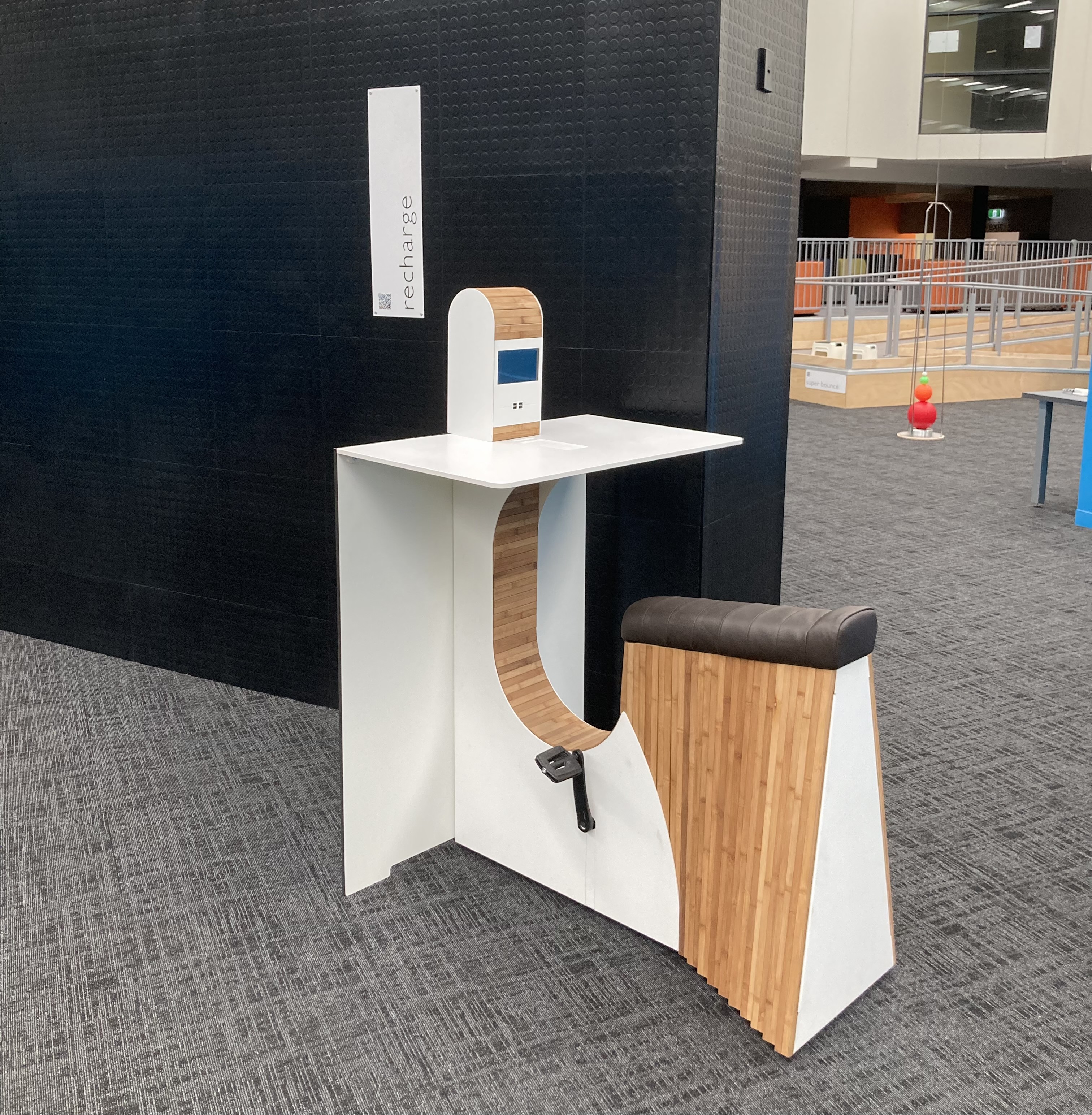
challenges
- Can you power the machine?
- Try charging your phone by 5%. How long does it take?
- See how fast you can go!
There are many different kinds of energy. Some examples are chemical energy, gravitational energy, electrical energy, kinetic energy and heat. Energy is needed to move something, you use energy every day that you get from the food you eat! When we think of energy, we normally think of the energy used to power our homes and different devices we own. This type of energy is called electrical energy. Electrical energy can be generated from kinetic energy - the kind of energy that an object has when it moves. It's similar to a wind turbine, where the wind moves the blades and this movement generates electricity that can be used to charge electronic devices.
This is just like the Recharge bike! As you cycle on the bike, it generates electricity that you can use to charge your phone. Give it a try, it is also good good for your health! Place your wireless charging compatible phone on the indent and cycle away!
bridge
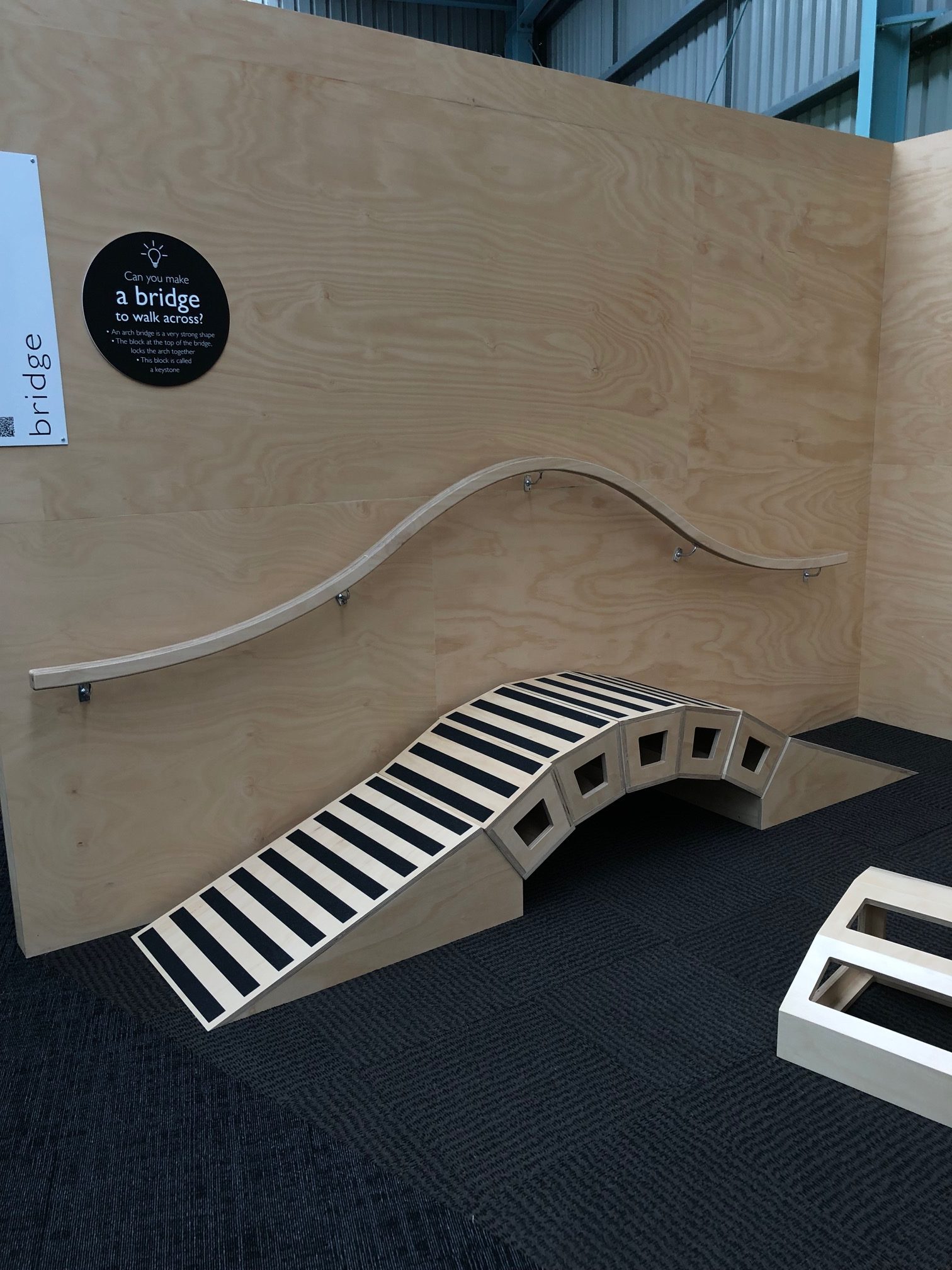
challenges
- Team up and see who can make a sturdy bridge the fastest!
- What happens when the keystone isn't in the right place?
A catenary arch is a special shape that can be used in bridge building. The word caternary comes from the Latin word for chain because if you hold a chain loosely from two sides, the shape the chain makes as it droops down is called a caternary arch.
We can also create an inverted (upside-down) caternary arch for the floor of our bridge like this exhibit bridge! This is a very strong shape for a bridge because it redirects the downward gravitational force in to compression forces that push along the bridge sideways, allowing the bridge to support a heavy load.
To assemble bridge, put the support pieces in first, then place the rest of the pieces on top. Remove the support pieces, and it will stay together! This is because of the special caternary arch shape, the forces will be spread smoothly through the bridge. You can even walk on it!
gyroscope
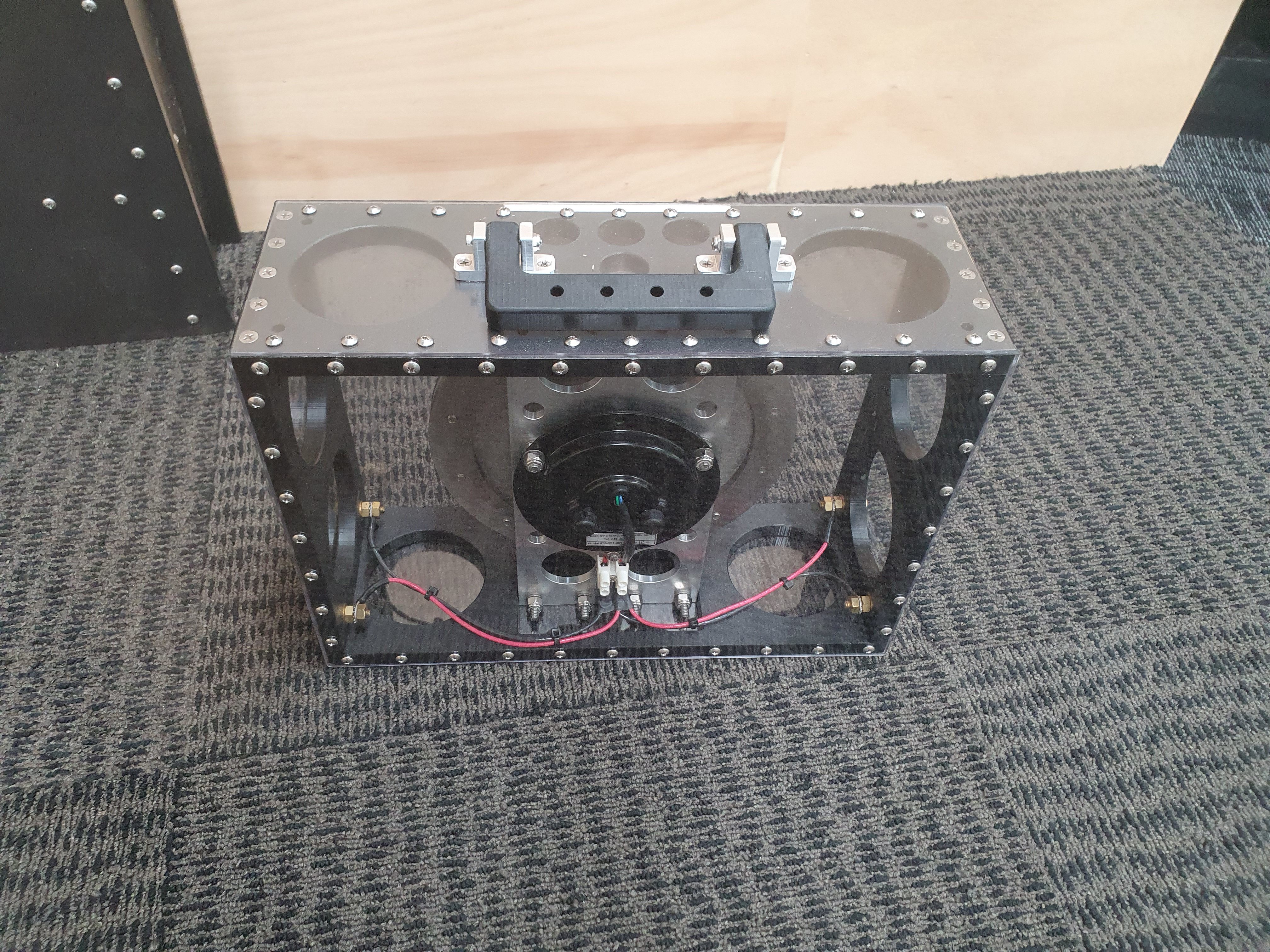
challenges
- Can you make the gyroscope float?
- Try spinning it around and see how it feels!
Have you ever wondered why it is easy to stay upright while you ride a bike but when you come to a stop it is very difficult to balance on it? The wheel tries to resist gravity to stay upright as long as it is spinning. When the wheel stops spinning, it happily falls down towards the ground under gravity. The ability of a spinning wheel to stay upright is called the conservation of angular momentum.
As you tilt a gyroscope, you can feel it trying to conserve its angular momentum and it is more difficult to move than you might expect.
Gyroscopes are used in compasses and autopilot systems on planes as they are useful for measuring orientation and detecting change. Do you notice that the suitcase is easier to move in some directions and harder in others?
gears
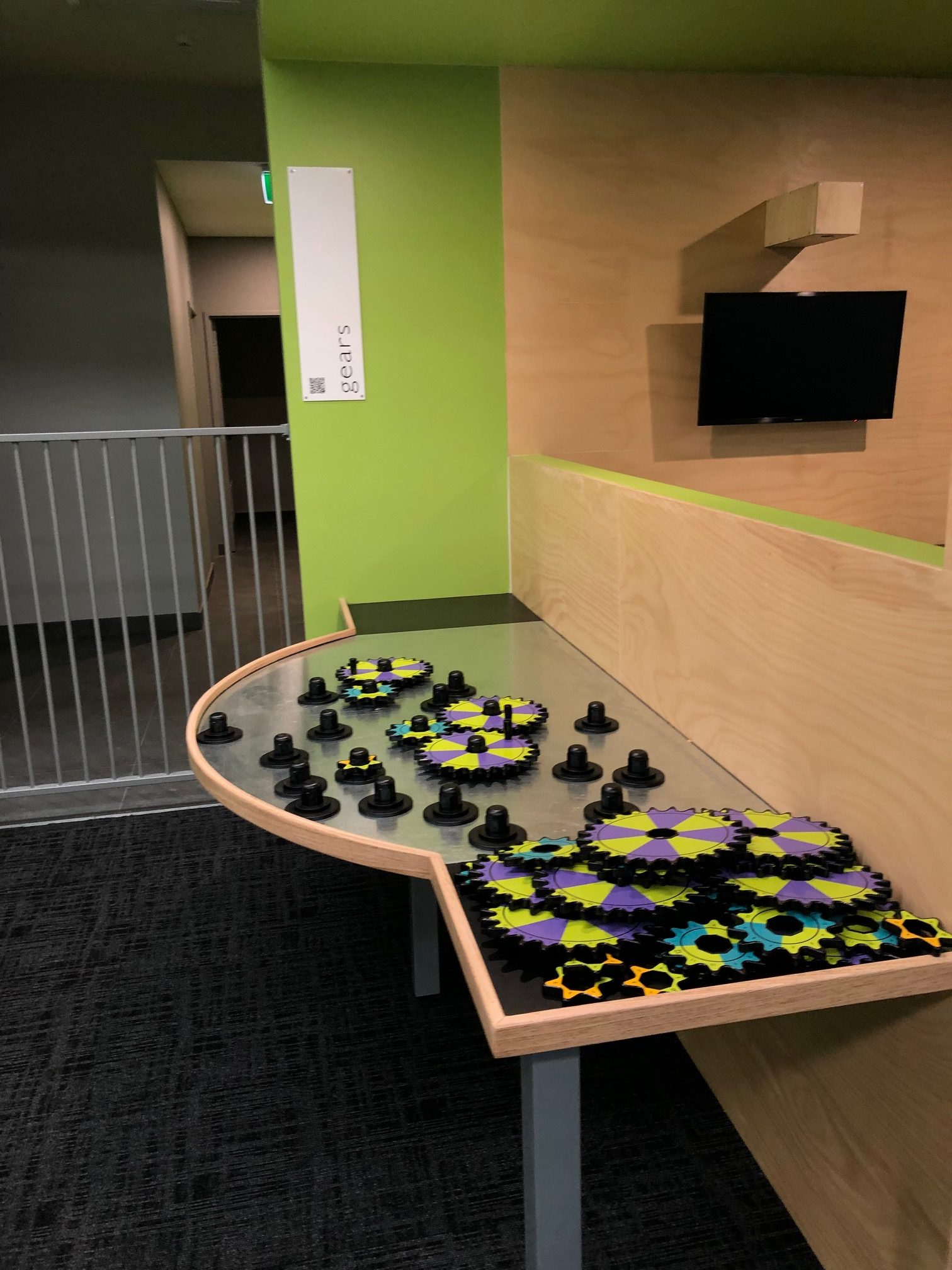
challenges
- See how long you can make a chain of gears!
- How many can you get to move by turning one?
- How do you make some spin faster than others?
Gears (also known as cogs) are a very common part of any machine. They are a wheel with teeth that can interlock with other wheels with teeth. Gears are useful for transferring movement from one part of the machine to another or speeding up some part of a machine while slowing down another. A big slow gear can turn with much more power than a small fast gear.
Bikes also need gears to transfer the power from your pedaling to the movement of the wheels! A movement with one gear can produce a slower or faster movement in another gear based on the size of the gear. Changing the gear on your bike is a cool way to see this, where the same level of pedaling affects the wheel spin speed differently depending on the gear you're in!
animate
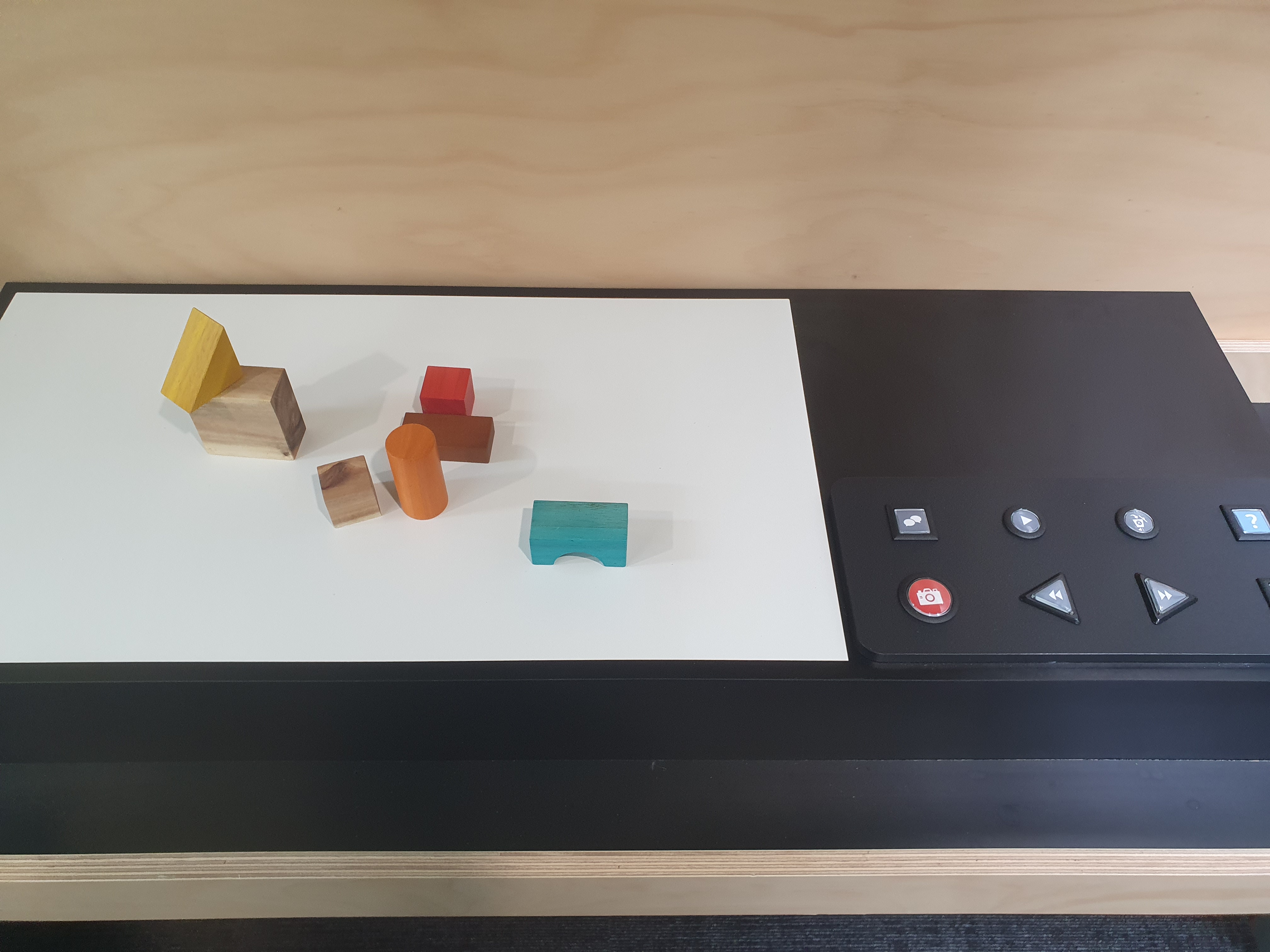
challenges
- Can you make a 5 second movie of some people talking?
- How do you make it look like something is moving across the screen?
- Try putting sound effects to your animation!
Stop motion animation is a very early form of filmmaking where objects in a scene are modified very slightly for each individual frame or photo that is taken of the scene. These frames (photographs) are then shown together in order very quickly, giving the illusion that the objects are moving in time.
Even today, every movie and TV show you watch is made up of 24 – 30 pictures flashing up each second. It gives the illusion of movement but its actually just lots of ‘frames’ or photos displaying really quickly.
pendulum
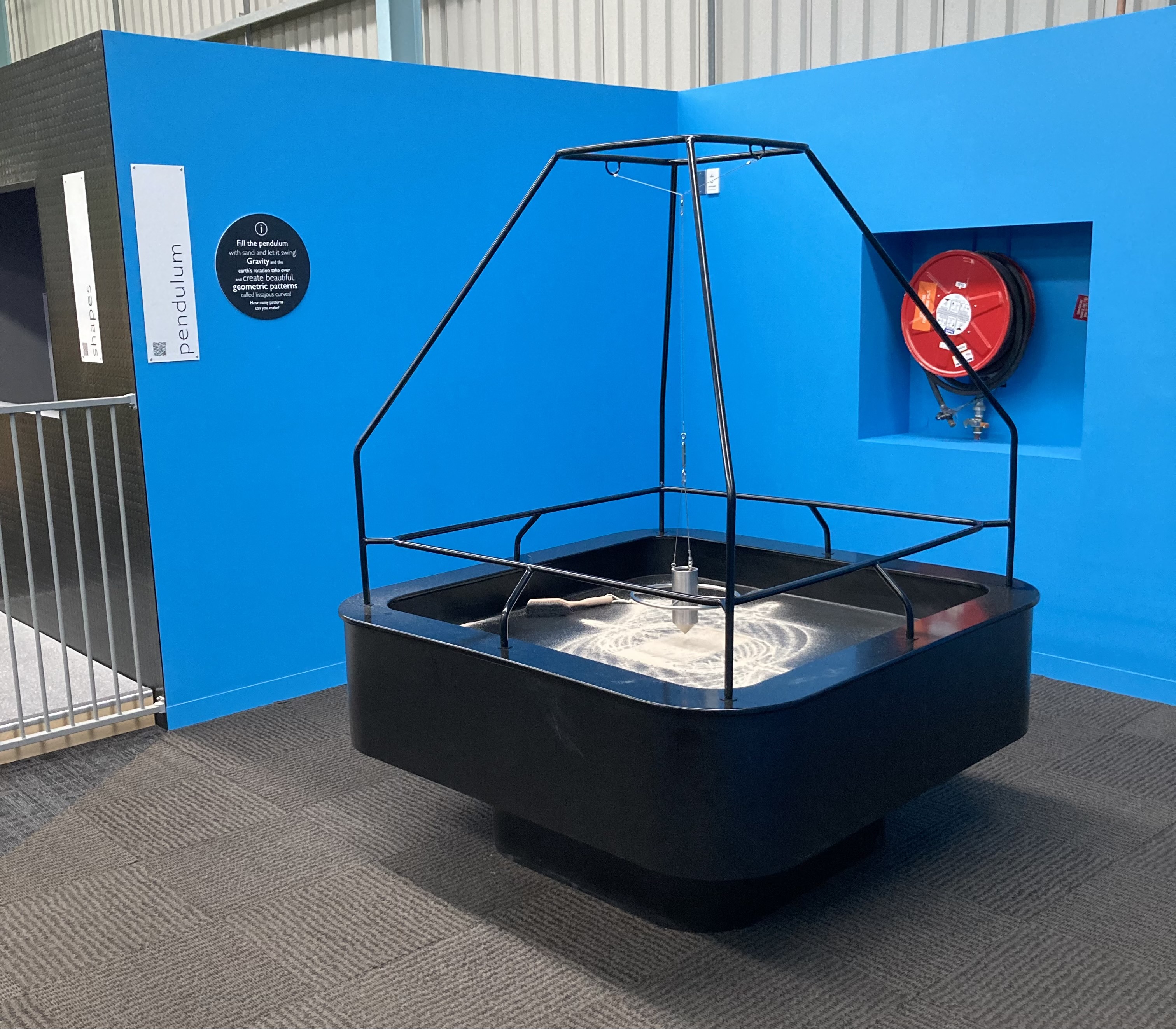
challenges
- How many different patterns can you make? Try starting the pendulum from different points and see what happens!
- See if you can make a super small pattern. How about a really BIG one?
- What’s the coolest pattern you can make?
A pendulum is a weight on a string or cable that can swing freely. Pendulums have a property called isochronism. Isochronism means that the time it takes a pendulum to swing isn't affected by how big each swing is or by the weight of the pendulum.
Notice that as your pendulum loses energy and makes smaller swings, the time each swing takes (the period of the swing) does not change. The period also stays the same for all weights! Only the length of the string or cable changes the period of a pendulum. Test it for yourself!
kaleidoscope
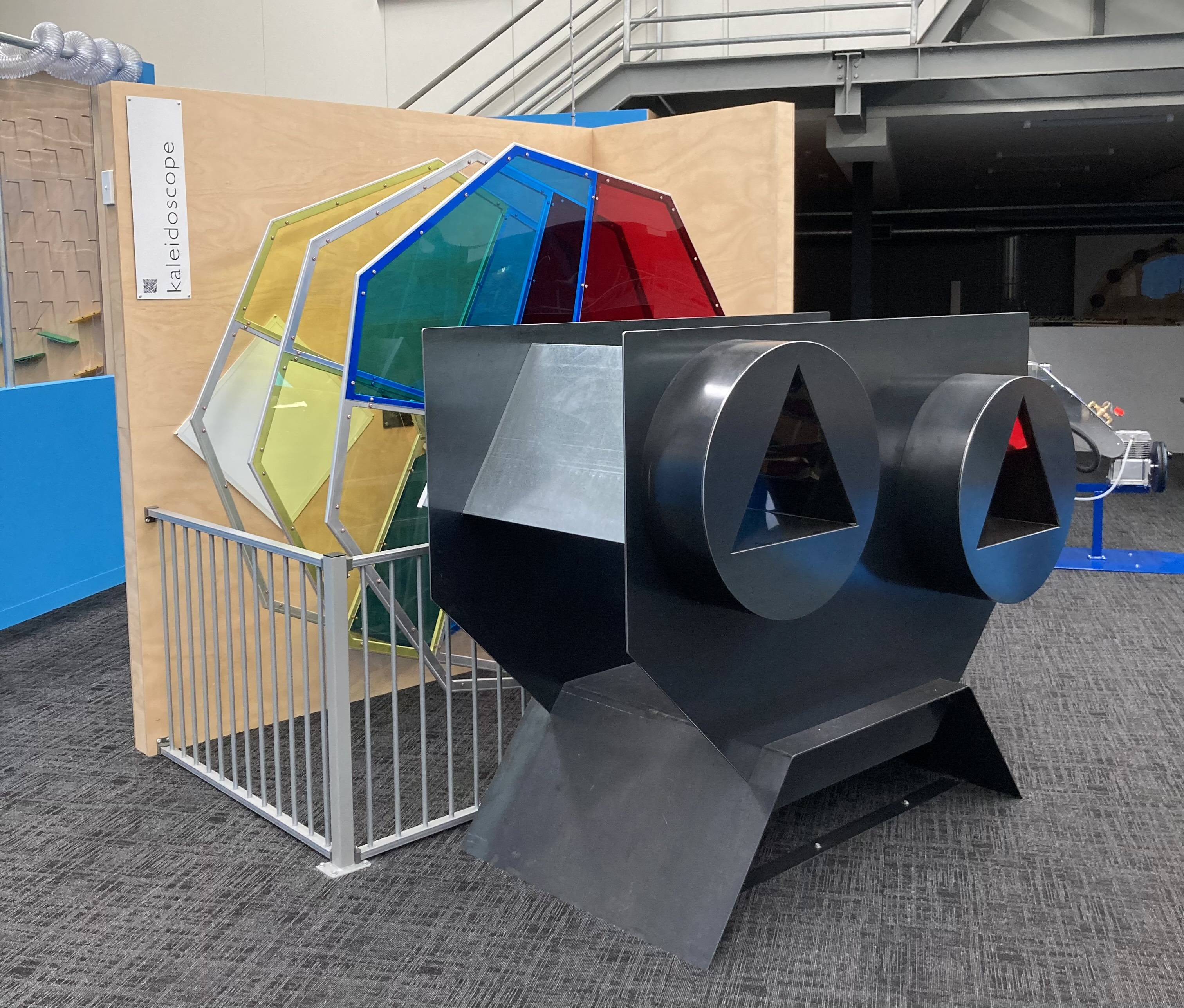
challenges
- What happens if you spin the coloured wheels in different different directions to one another?
- How about all in the same direction?
- Try spinning the wheels really slowly, what do you see!
The kaleidoscope was invented in 1816 by the Scottish scientist Sir David Brewster. They are made with reflecting surfaces angled towards each other. Because of the arrangement of these reflective surfaces, you can see symmetrical copies of objects on the other side of the kaleidoscope.
Spin the big coloured wheels in different directions and look through to the other side, what shapes and colours can you see?
momentum
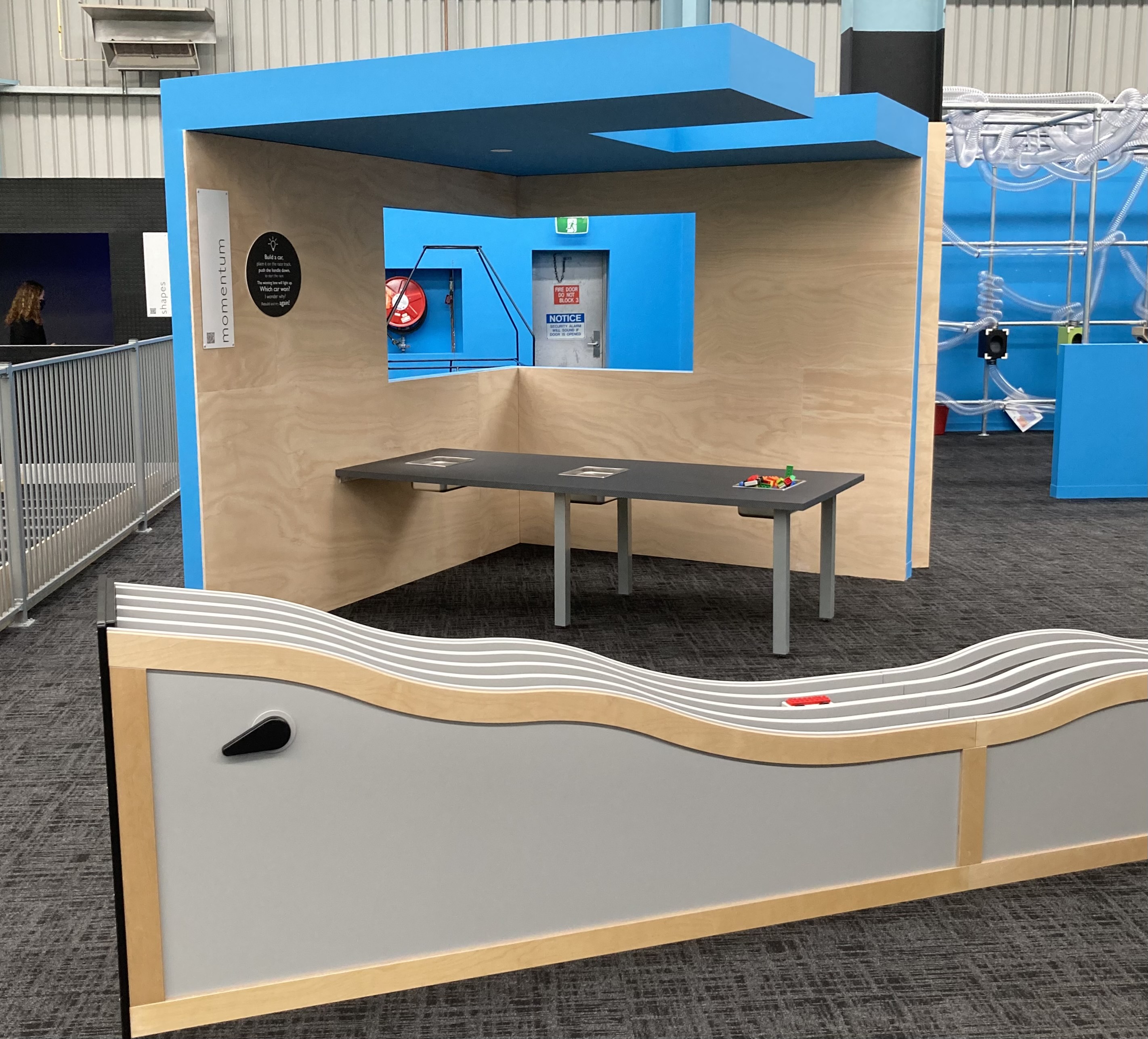
challenges
- Try to beat a friend in the race!
- Build the craziest looking car you can imagine! How did it go!?
- Try building a really small car and a really BIG car! How do they compare in speed?
Build a car, place it on the race track, push the handles down to start the race. What happens to the car’s speed as it goes down the hill? How about when it goes over the bump in the track? Momentum carries the car the track and all the way to the finish line!
Heavy things, or things that are moving fast have the greatest momentum. How could you use this information to build an even faster car!?
hoops
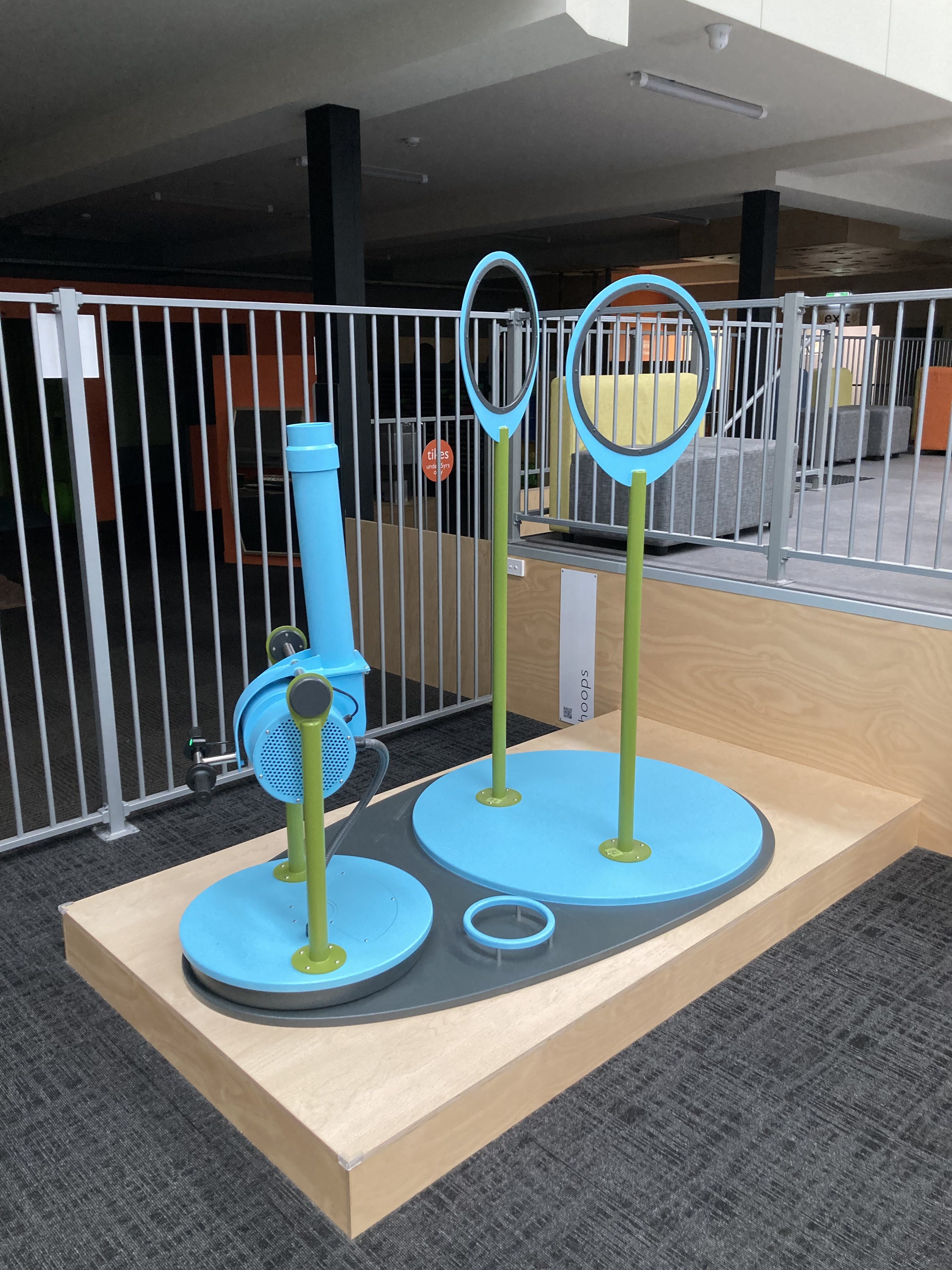
challenges
- How long can you keep the ball floating in the air?
- See if you can get the ball through both hoops!
Bernoulli's principle tells us that fast moving air is lower pressure (it sucks or pulls) and slow moving air is higher pressure (it blows or pushes). You can get a ball to stay in a jet of air because the slow moving air around the jet is high pressure and pushes the ball back on to the lower pressure jet of air. You can also think of the faster air sucking the ball back on to it. If the ball tips to the side, it is pushed (or pulled) back into the centre of the jet and stays floating in the same place!
Can you think of any examples of the Bernoulli principle in your life?
super bounce
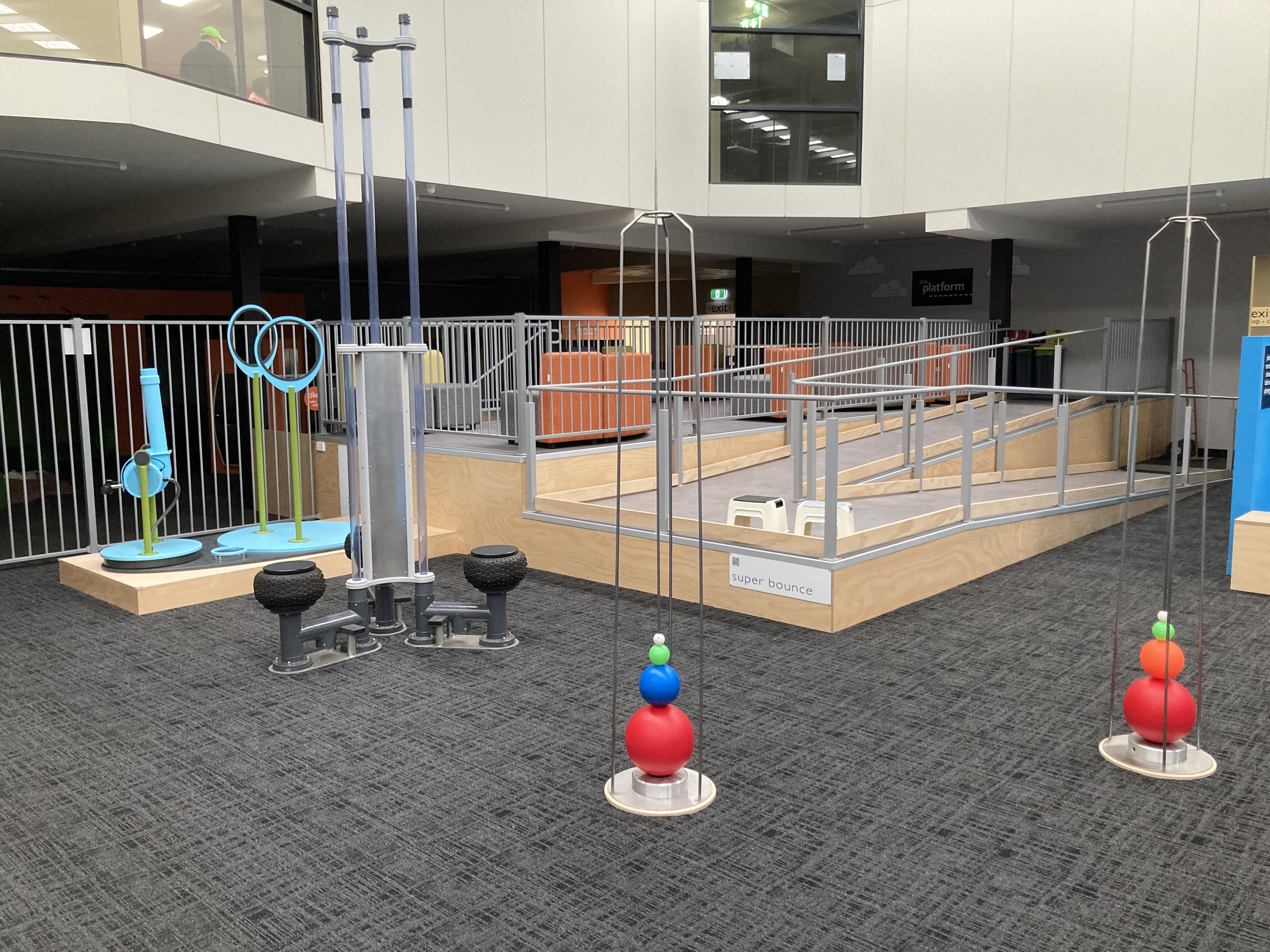
challenges
- Try dropping the balls from half way, what happens?
- With a friend, see who can get their top ball to bounce the highest!
- How about the lowest?
When the bigger, heavier balls bounce off the ground they collide with the balls above them. When they hit a smaller ball at this speed, the smaller, lighter ball will move upwards at a much faster speed than it was dropped. This is because of the conservation of momentum.
A heavy ball that collides with a lighter ball can transfer it's momentum to the lighter ball. A lighter ball will need to travel much faster than a heavier ball for momentum to be conserved between the two balls because momentum is the speed of an object multiplied by its weight.
tracer
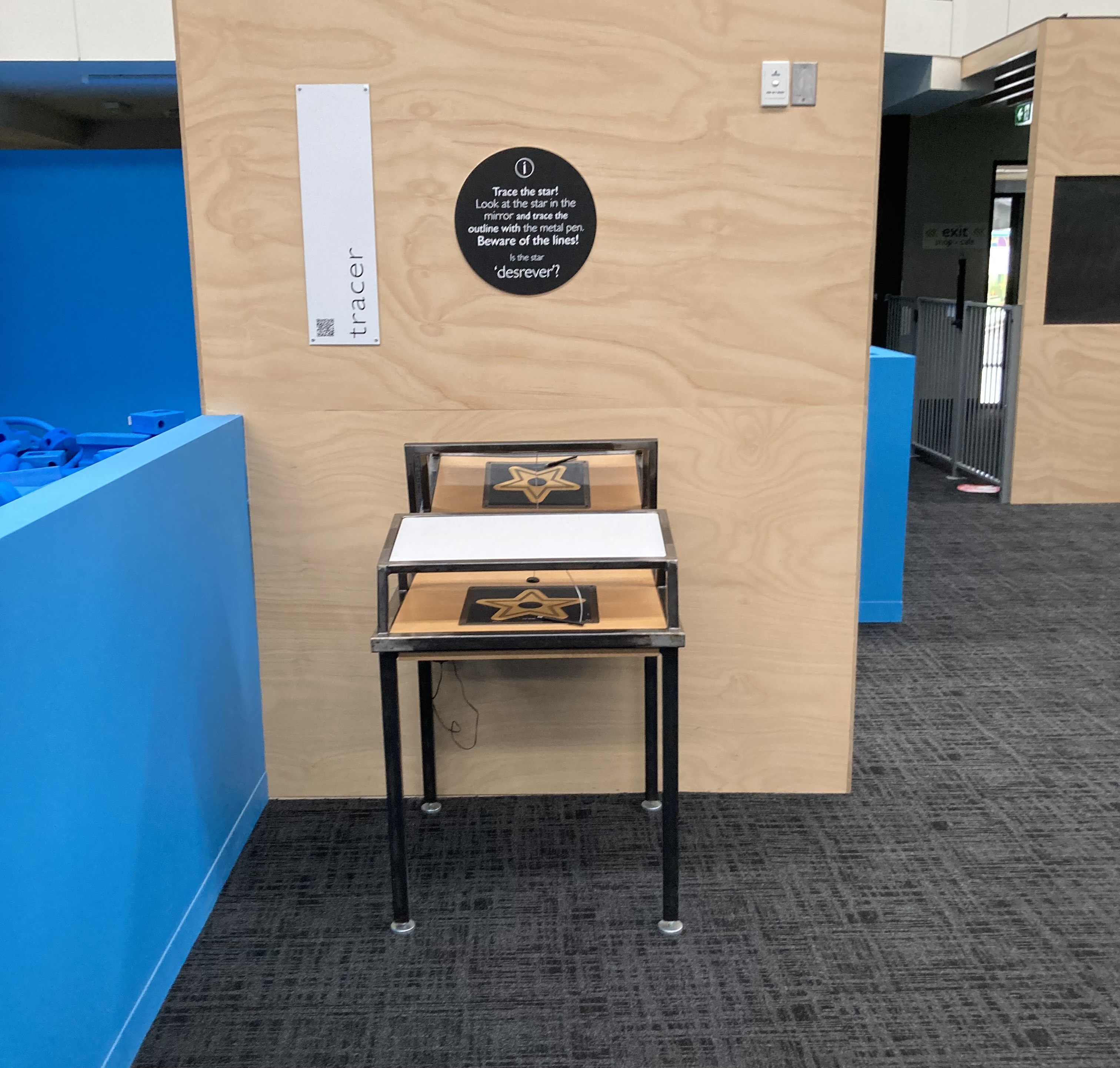
challenges
- Can you trace the whole star with less than five mistakes?
- How about all in one try!
- Try and make as few mistakes as possible with a friend. Who has the sturdier hand!?
Look at the star in the mirror and trace the outline with the metal pen. Is the star ‘desrever’? Do you know how mirrors work? Light comes from a source like the sun, reflects off our bodies, reflects off the mirror and finally makes its way into our eyes.
Did you know that the image that our eyes see is actually upside down! Our brain has to flip this image so we can see the world the right way up!
puzzle
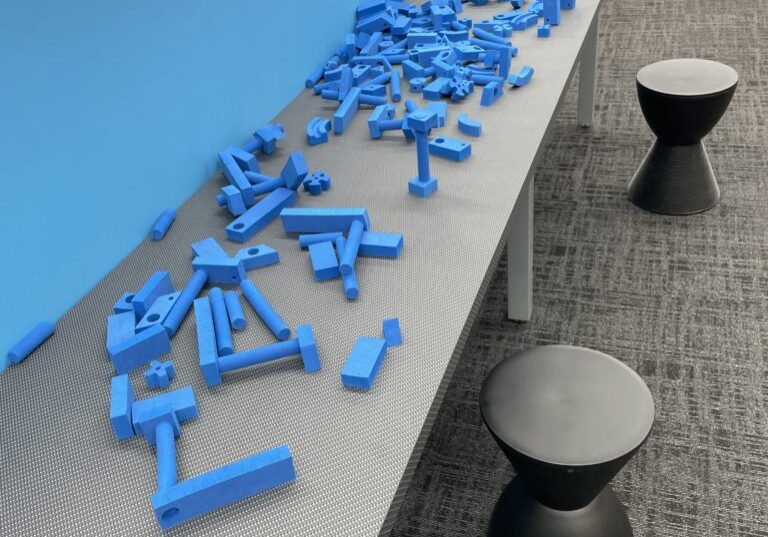
challenges
- Make something in the engineering zone and then make a small replica here!
- Have a tower building competition with your friends!
- Can you make a whole city?
bubbles
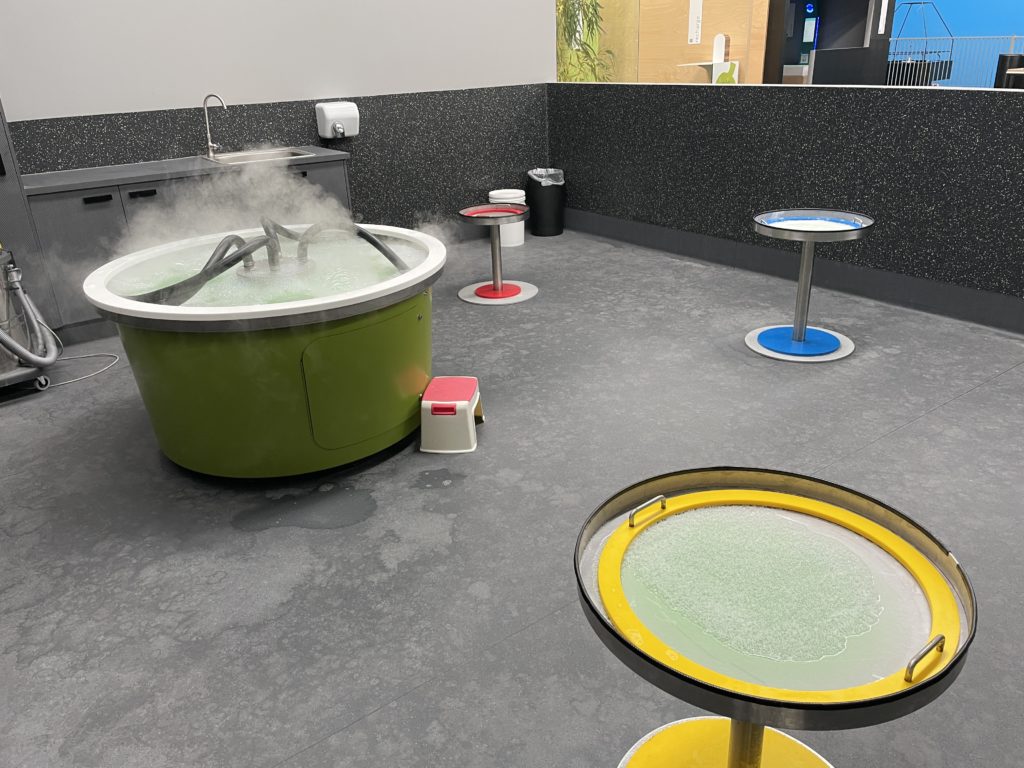
challenges
- Try to catch a bubble within another bubble!
- See if you can put your friends inside a bubble (ask a staff member for help if you can’t - they love to do it)
- How long can you balance a fog bubble in the air with the pipe?
- Can you figure out how to hold a bubble in your hand?
A bubble is just a very thin skin of liquid holding some air inside it. The liquid skin is constantly moving and running, which is why the bubble appears to be flexible. Bubbles are always roughly spherical because this is the shape using the least surface area to contain its volume, decreasing tension.
Our giant bubble mix is made by adding detergent to water along with some other ingredients, which decreases tension allowing the skin to stretch! The colours of the skin show us the thickness, and dark areas are where it is thin. Bubbles are very delicate and don’t live long. Using the fog pipes, you can see how the air gets trapped in the bubble and what happens when it bursts.
light writer
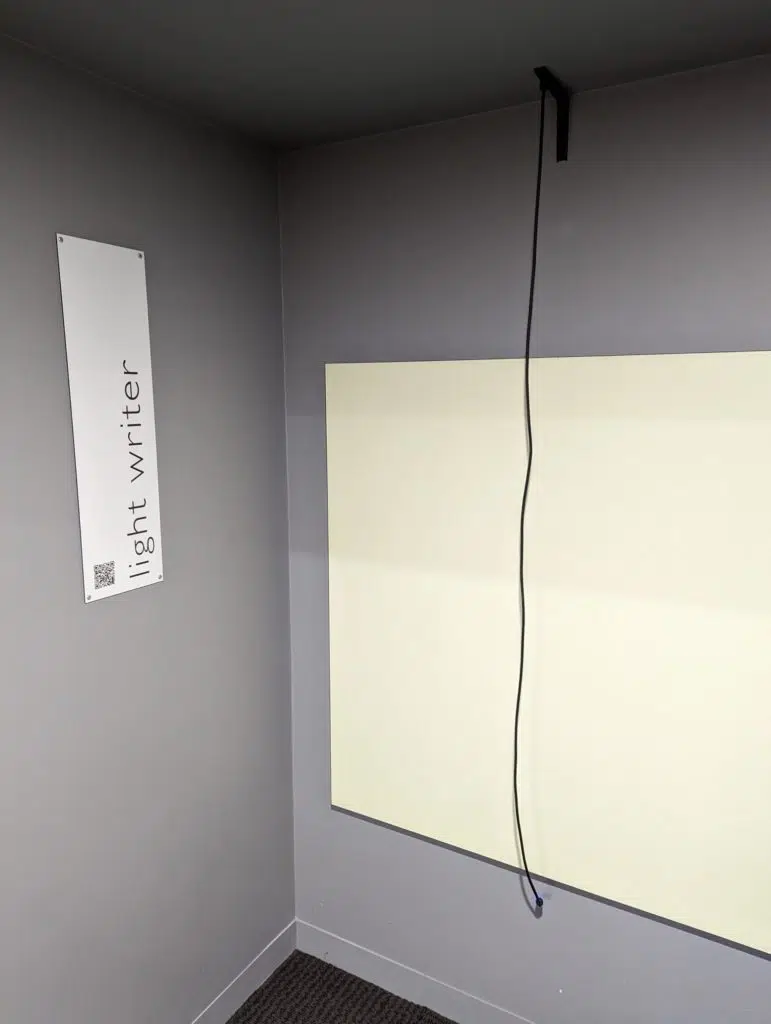
challenges
- Who can write the longest word before it all disappears?
- Can you write your name?
- Do a portrait of your friends!
The UV (ultraviolet) writing wall is very cool! Humans can’t see UV light on account of the electromagnetic wavelengths being too short for our eyes to register (for infrared light the wavelengths are too long). So that means we can only use UV light when there is a special fluorescent ink or surface that will reflect light which our eyes can register!
These surfaces can be made with glow-in-the-dark paint. UV light is the same light that is emitted by the sun, which we use to ‘charge’ our glow-in-the-dark objects. Therefore, it makes sense that casting a UV pen light onto a glow-in-the-dark wall will enable you to write messages that disappear as the UV light disappears!
